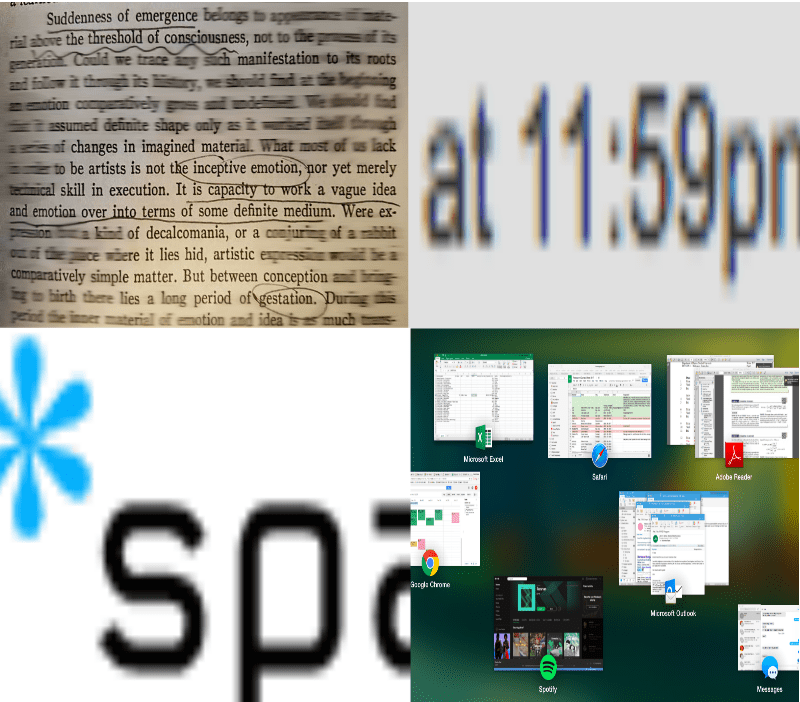Often, there are moments or events which must be endured but which, in the great ineffable scheme, serve absolutely no purpose whatsoever. Redundant, pointless, arbitrary things that we do or that happen to us; things we don’t choose or want but can’t escape. Cursive is meant to teach us this lesson from a very young age, and the whole situation pretty much goes downhill from there.
In the hierarchy of needless suffering, academic bullshit has staked and claimed its own very particular niche. The whole engine of academia pretty much runs on deciding whether we believe the historical and philosophical accounts of Bobicus Romanicus, and who said what 703 years ago and whether or not it was before so-and-so proved them wrong, and the implications if it was versus the consequences if it wasn’t. It’s a universal farce that we (the bitter and jaded community of academic bullshitters) don’t much care for but are now sullenly committed to and have all quietly agreed to perpetuate out of sheer spite, because it takes less immediate effort than generating and implementing curriculum with practical application.
Therefore, in the true spirit of our esteemed global scholastic system, let us now analyze that most essential and respectable denomination of academic bullshittery: the analytical essay.
- That one sentence of actual relevance that you shuffle around and cross-apply 17 times until you’ve reached the length requirement
Say your standard analytic assignment has a length requirement of about four to five pages. The first thing you’ll need is a topic that can be fully addressed in approximately two or three sentences. Those sentences will probably contain the only actual content you’ll need for the next four to five pages. The rest is all makeup and hair and ambient lighting.
Students are incredible creatures. They possess a unique hold over the laws of physics by which a single unit of academic bullshit can magically become 10, each with nicely varied grammatical structures to set a pleasing reading pace. The well-practiced student can stretch and rearrange, adapt and configure and mutilate language so that a single idea can become as long or as short as it needs to be.
2. Name-dropping important historical events (topical relevance optional)
Of course, it’s not all slice-and-dice and cut-and-paste; you’ve gotta have sources. You’re just some poor schmuck writing about a lot of other poor schmucks so that you can get a passing grade and finally move on with your life and close your 26 browser tabs.
The problem, of course, is that citing sources is tedious and usually stretches the truth like a sinner on the rack. Far simpler to create the illusion of a well-informed and contextualized essay by dropping a few generally-known but rarely-thought-of historical connections. Did you know that Event X was a direct reaction to the American Revolution? How thrilling. The precedent set by the Greeks paved the way for Event Y, and eventually led to the discovery of the woolly mammoth. Sensational. The turmoil of Artist Z’s time is clearly reflected in the contrasting tones and stark shading that surround the subject, which is an obvious allegory for the oppression of the working class. Well, if you bothered to learn about history, you must be some kind of nerd who knows what they’re talking about.
3. Gaming the deadline (Received at: 11:59 p.m.)
While the hour before a deadline has been proven via decades of practical evidence to be the No. 1 most productive time period of any given student’s week, it is occasionally possible to take procrastination to the next level. Unfortunately for those of us who live in California, midnight here is past-midnight in the rest of the country. But if you didn’t grow up in California, midnight deadlines were never quite as absolute as they seemed. Depending on where the server of a grading website was located, you could milk those precious two hours when it was “midnight” for you, but still 10:00 PST. The possibilities for manic nonsense in a professional tone of text are endless when you can turn an essay in at 2:00 a.m. and still get full credit from your West Coast-based online grader.
4. “Thus”
In the world of physical interaction with real people who aren’t supercilious assholes, there are some words and phrases that do not and, in all likelihood will not, have a place. “Ergo.” “It follows that…” “As such.” But if there’s one real purpose of analytical essays, it’s to prove that you can be a pompous pundit more cleverly than every other pompous pundit who has written on the very same topic as you. When better to aggravate people with unnecessary syntax and subordinate clauses than when also aggravating them with unnecessary opinions? Everybody knows a good analytical essay will include no less than 80 percent polysyllables and 20 percent obscure and honestly obsolete wording. (Also consider words like “urgent,” “unparalleled,” “exponential” and “significant,” to ensure that your reader really understands why your argument matters.)
Contact Maximiliana Bogan with more essay writing tips at ebogan ‘at’ stanford.edu.
